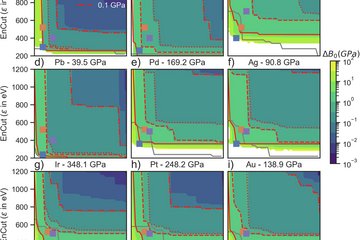All genres
1.
Journal Article
From hard to rubber-like: mechanical properties of resorcinol-formaldehyde aerogels. Journal of Materials Science 50 (16), pp. 5482 - 5493 (2015)
2.
Thesis - PhD
Nanostructured cellulose aerogel reinforced polymers. Dissertation, Fakultät für Georessourcen und Materialtechnik der RWTH Aachen, Germany (2020)
3.
Thesis - PhD
Nanostrukturierte Cellulose-Aerogel-Polyesterverbunde. Dissertation, RWTH Aachen University (2020)
4.
Thesis - PhD
Synthese und Eigenschaften flexibler Resorcin-Formaldehyd- und Kohlenstoffaerogele. Dissertation, RWTH Aachen, Aachen, Germany (2018)











